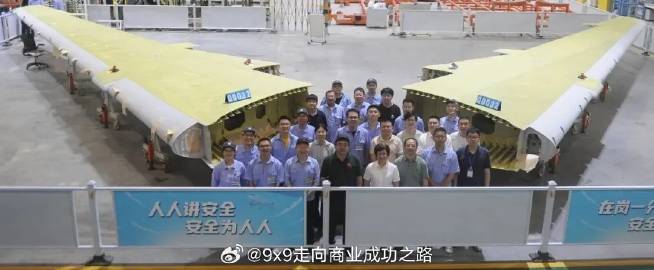COMAC C919-600: Production Advances for New High-Altitude Airport Variant
The C919-600 program, a shortened-fuselage variant, moves forward with the airworthiness certification of its first major structural component, staying on track for a 2027 maiden flight.
The development of the COMAC C919-600, the shortened-fuselage variant of the Chinese single-aisle aircraft, is progressing as planned. Recently, a major structural component of the aircraft, the outer wing box, passed inspection by the Civil Aviation Administration of China (CAAC) and received its corresponding airworthiness certificate.
The part, manufactured by AVIC Xi'an Aircraft Industry Corporation (XAC), belongs to the aircraft with manufacturer serial number (MSN) 00032. This event, first appearing in Weibo social network and reported by The Air Current, marks the delivery of the first large structural component for the initial C919-600 prototype, confirming that the timeline projecting a first flight in 2027 and entry into commercial service in 2028 remains on track.

This model, also known as the "Plateau" version, stems from a strategic cooperation agreement signed in 2023 between COMAC and Tibet Airlines. The goal is to develop an aircraft specifically adapted for the demanding conditions of Hot & High airports (high temperature and high altitude), a market niche where aircraft performance is significantly affected.
Why is a special aircraft needed for high altitudes? At higher altitudes, air density is lower. This reduces both the thrust that engines can generate and the lift produced by the wings. As a result, aircraft require longer runways for takeoff and landing. Modified aircraft, like the C919-600, are designed with a higher thrust-to-weight ratio and aerodynamic enhancements to operate safely and efficiently in these environments.
The C919-600 is positioned as a direct competitor to the Airbus A319neo, a model the European manufacturer promotes for its excellent performance at such airports. To compete, COMAC plans to shorten the length of the original C919 (from 38.9 meters) and incorporate engine improvements over the current CFM International LEAP-1C. With these modifications, the aircraft is estimated to carry between 138 and 153 passengers, depending on the configuration.
The choice of Tibet Airlines as a partner is no coincidence. The airline, based at Lhasa Airport (LXA) at 3,570 meters above sea level (masl), is the main operator in the Tibet region and flies to some of the world's highest airports, such as Qamdo (BPX), located at 4,311 masl. Its current fleet, which includes about thirty Airbus A319ceo and A319neo aircraft, provides invaluable operational experience that will be crucial for the development and testing of COMAC's new aircraft.

/https://aviacionlinecdn.eleco.com.ar/media/2023/12/GBhb1hRbEAApagX.jpg)
Para comentar, debés estar registradoPor favor, iniciá sesión